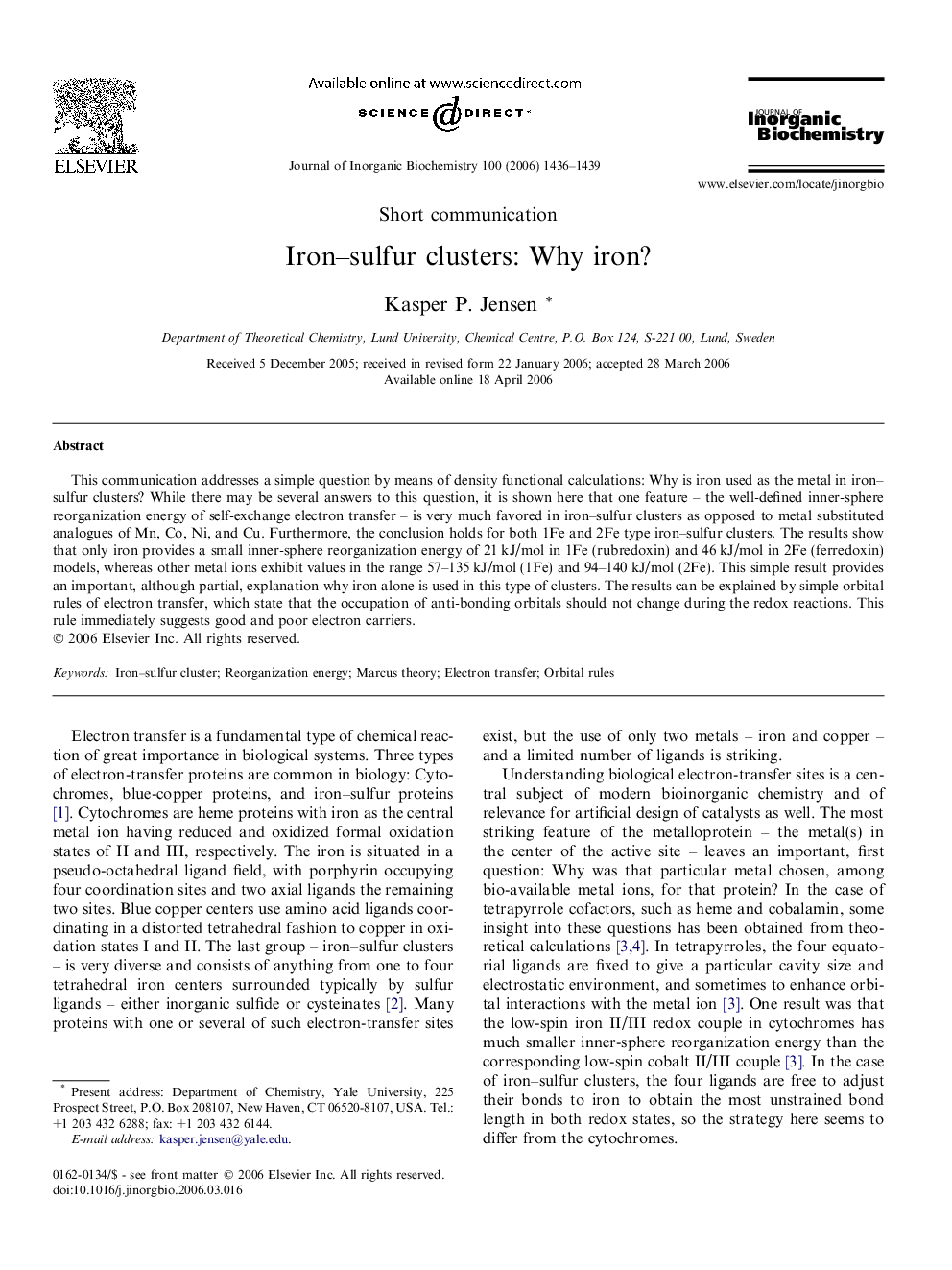| Article ID | Journal | Published Year | Pages | File Type |
|---|---|---|---|---|
| 1316646 | Journal of Inorganic Biochemistry | 2006 | 4 Pages |
This communication addresses a simple question by means of density functional calculations: Why is iron used as the metal in iron–sulfur clusters? While there may be several answers to this question, it is shown here that one feature – the well-defined inner-sphere reorganization energy of self-exchange electron transfer – is very much favored in iron–sulfur clusters as opposed to metal substituted analogues of Mn, Co, Ni, and Cu. Furthermore, the conclusion holds for both 1Fe and 2Fe type iron–sulfur clusters. The results show that only iron provides a small inner-sphere reorganization energy of 21 kJ/mol in 1Fe (rubredoxin) and 46 kJ/mol in 2Fe (ferredoxin) models, whereas other metal ions exhibit values in the range 57–135 kJ/mol (1Fe) and 94–140 kJ/mol (2Fe). This simple result provides an important, although partial, explanation why iron alone is used in this type of clusters. The results can be explained by simple orbital rules of electron transfer, which state that the occupation of anti-bonding orbitals should not change during the redox reactions. This rule immediately suggests good and poor electron carriers.
